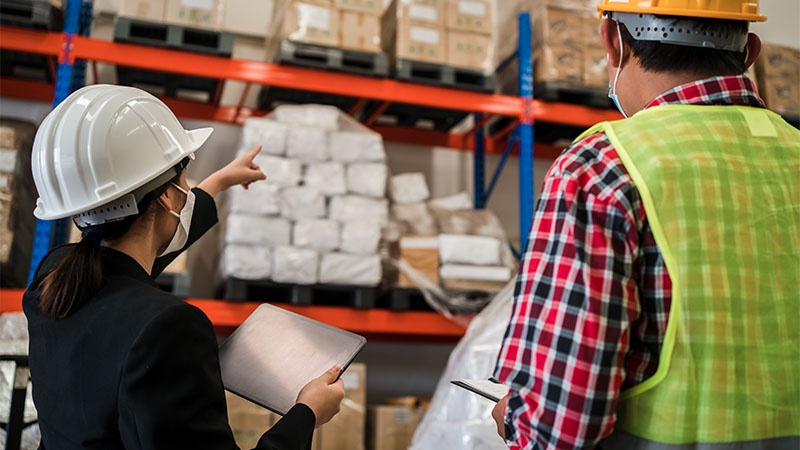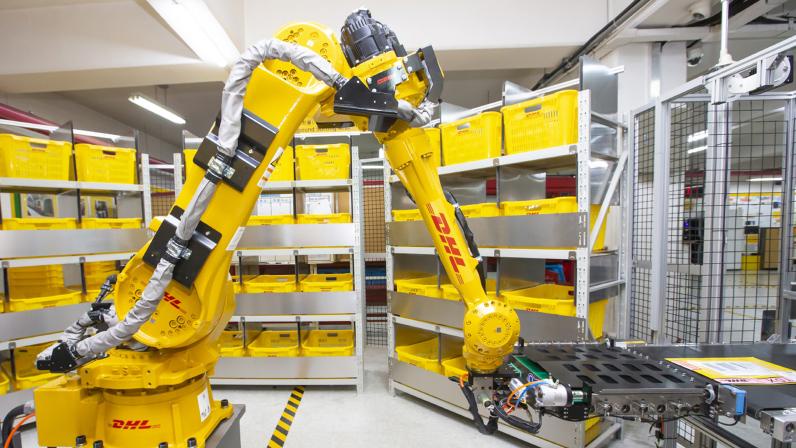With global e-commerce booming and increased customer expectations on a faster delivery at lower price, what are the rising logistics and delivery innovations to meet the demand? Below are six trends that can shape the logistics industry in 2022.
Trend 1: Agile supply chains and 5PL Logistics Solutions for e-commerce businesses
The onset of the pandemic has disrupted the global supply chains and it's been struggling to bounce back. The shortages of shipping containers, workers, and raw materials as well as tightened border controls and inflation are still causing enormous disruption to global trade, with backlogs and delays at key transit ports across the world, and these frictions are expected to continue into 2022.
The need for businesses to run agile and flexible supply chains that can adapt to market disruptions in real-time has never been more important - and this is especially true for e-commerce businesses. After all, their customers don't care about wider supply chain issues; they just want their orders on time and will be reluctant to return to brands that don't deliver.
That's where outsourcing logistics to a Fifth-Party Logistics (5PL) partner - such as DHL - can be an invaluable decision for e-commerce businesses. As supply chains become increasingly complex, the 5PL model has emerged to meet the demands. A 5PL partner will handle all the logistical needs of a client, by first identifying their exact requirements, then by planning, executing, and managing the entire logistics solution. 5PL partners have the size and experience to source and manage other suppliers along the supply chain, and leverage the latest technologies to ensure every touchpoint is optimized. In short, 5PLs are an all-in-one solution to meet all logistics needs and ensure everything runs on time. In 2022, with supply chains facing continued disruptions, the role of 5PLs will be more important than ever.
Trend 2: Elastic logistics by Artificial Intelligence (AI)
E-commerce can sometimes be unpredictable. A new consumer trend that sends a certain product flying off the (online) shelves may leave businesses overwhelmed. This is where elastic logistics prove valuable - logistics with the flexibility to quickly expand or shrink to meet demands within the supply chain.
Elastic logistics is made possible by Artificial Intelligence (AI) and analytics that can predict upcoming surges in consumer demand and identify where the supply chain needs to stretch or shrink to manage it. In the warehouse, AI technology automates key picking, packing, and inventory processes, reducing turnaround times, moving shipments faster, and allowing e-commerce businesses to remove items from customers' visibility if stocks run too low. AI has the potential to boost rates of profitability by an average of 38 percent by 2035 and lead to an economic boost of US$14 trillion across 16 industries in 12 countries by 2035. For the transportation and storage industry, AI can lead to a profit increase of 44%.[1]
Essentially, elastic logistics enables businesses to make supply-led decisions which in turn saves costs and reduces wastage along the process. As the e-commerce sector becomes competitive, this logistics model is likely to be adopted by more and more businesses in the future.
Trend 3: Self-driving vehicles
Driver shortages is at a record high across the world, and the situation is only going to get worse in 2022. The American Trucking Association estimates that in 2022, there will be a shortage of 90,000 drivers in the US [2], while in Europe the situation is just as bleak, with Transport Intelligence forecasting that the continent is currently short of around 400,000 drivers[3].
Against this backdrop, conditions are ripe for the growth of the self-driving vehicle industry. In the first half of 2021, investments in autonomous trucking companies reached US$5.6 billion[4], and are expected to see significant developments in the sector in 2022.
Trend 4: E-commerce continues at speed
The Covid-19 pandemic gave an enormous boost to e-commerce and changed consumer behavior. As a result, the recent boom in e-commerce will continue at speed in 2022. Worldwide retail e-commerce sales are forecast to hit US$5.4 trillion[5] while the global cross-border e-commerce market size is projected to reach USD 1.508.7 billion by 2027, from USD 532.7 billion in 2020, a compound annual growth rate of 15.5% during 2021-2027[6] Cross-border e-commerce provides many benefits for small businesses looking to expand their businesses and the opportunity to sell their products directly to consumers, eliminating the complex supply chain. DHL's study predicts strong growth for the B2B E-commerce market by 2025, 80% of all B2B sales interactions will take place in digital channels. The millennials are the main drivers of this global e-commerce growth, accounting for 73% of all professional B2B purchasing decisions.[7]
Trend 5: Robotics and automation
In warehouses, the use of autonomous and automated robotic solutions will continue to grow - saving businesses time and money. In fact, the global autonomous warehouse robotics market is expected to almost double in size by 2025, reaching US$27.2 billion[8]. In e-commerce supply chains, where speed is fundamental, automated storage and retrieval systems can be utilized in warehouses to find, pick and move inventory around more quickly, helping businesses meet tight delivery deadlines for customers. The global logistics robots market size reached US$ 11.7 billion in 2021 and is expected to reach US$ 49.4 billion by 2027[9].
Amid the rise of cross-border e-commerce, DHL Express has introduced DHLBot, an AI-powered robotic arm that automates parcel sortation in Singapore and South Korea which enables hubs and gateways to handle greater volumes while increasing overall operational efficiency by at least 40 percent.[10]
Trend 6: Sustainability
This was a key buzzword in 2021 logistics and delivery trends predictions, and it's set to feature heavily in 2022 too. Consumers are increasingly expecting brands to take environmental responsibility - from their sustainable packaging to their emissions - and businesses are waking up to the financial benefits of reducing wastage along their supply chains.
One of the biggest carbon-offenders along the e-commerce supply chain is transportation: according to the Boston Consulting Group, transport-related activities account for 17% of global greenhouse gas emissions[11]. To counter this, the adoption of green vehicles is becoming more widespread. Investment bank UBS estimates that by 2025, 20% of all new cars sold around the world will be electric[12].
This year, large corporations are emphasizing sustainability targets and making their entire supply chains greener. More and more consumers are willing to pay extra for the sustainable delivery of goods. The focus on green consumerism is a clear indicator that brands that prioritize environment-friendly practices will dominate the market in the coming years.
DHL aims to electrify 60% of its last-mile deliveries and have 80,000 e-vehicles on the road by 2030, as part of a Group-wide target to reduce all logistics emissions to net-zero by 2050. Furthermore, in August 2021, it made aviation history by ordering 12 fully electric Alice eCargo planes from aircraft manufacturer Eviation[13].
DHL - The logistics company for the world
DHL is the leading global brand in the logistics industry. Our DHL divisions offer an unrivalled portfolio of logistics services ranging from national and international parcel delivery, e-commerce shipping and fulfilment solutions, international express, road, air and ocean transport to industrial supply chain management. With about 400,000 employees in more than 220 countries and territories worldwide, DHL connects people and businesses securely and reliably, enabling global sustainable trade flows. With specialized solutions for growth markets and industries including technology, life sciences and healthcare, engineering, manufacturing & energy, auto-mobility and retail, DHL is decisively positioned as "The logistics company for the world".
DHL is part of Deutsche Post DHL Group. The Group generated revenues of more than 66 billion euros in 2020. With sustainable business practices and a commitment to society and the environment, the Group makes a positive contribution to the world. Deutsche Post DHL Group aims to achieve zero-emissions logistics by 2050.
[1] Accenture ,2017
[2] GoRamp, November, 2021
[3] GoRamp, November, 2021
[4] GoRamp, November, 2021
[5] Statista, July, 2021
[6] Bloomberg, 19 Jan 2022
[7] The ultimate B2B e-commerce guide, 2021
[8] PRNewsWire, June, 2020
[9] Logistics robots market 2022-2027, Jan 2022
[10] DHL, Sep, 2021
[11] Boston Consulting Group, July 2020
[12] BBC News, June 2021
[13] Eviation
Source: PC and Associates Consulting

